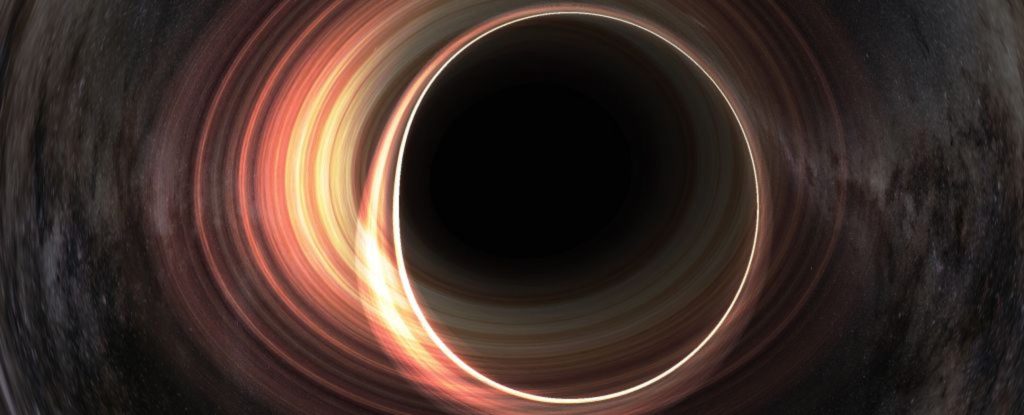There is a new type of black hole analog that could tell us something about an elusive radiation theoretically emitted by the real thing.
A team of physicists led by Lotte Mertens of the University of Amsterdam in the Netherlands was able to use a chain of atoms in a single file to simulate the event horizon of a black hole, a Hawking radiation.
This could help resolve the tension between two currently mutually exclusive frameworks for describing the Universe: the general theory of relativity and quantum mechanics.
Black holes sort of lie in between the two extremes. These massive objects are so incredibly dense that, within a certain distance of the black hole’s center of mass, no velocity in the Universe is enough for escape.
That distance is called the event horizon. Once an object crosses its boundary, all information is lost after that. However, in 1974, Stephen Hawking proposed that interruptions to quantum fluctuations caused by the event horizon result in a type of radiation like thermal radiation.
A one-dimensional chain of atoms served as a path for electrons to ‘hop’ from one position to another. The physicists could cause certain properties to vanish by tuning the hopping. This created an event horizon that interfered with the wave-like nature of the electrons.
The effect of this fake event horizon led to a rise in temperature that matched theoretical expectations of an equivalent black hole system.
This could mean the entanglement of particles that straddle the event horizon is vital in generating Hawking radiation.
The final results indicated that Hawking radiation may only be thermal within a range of situations, and when there is a change in the warp of space-time due to gravity.
“This can open a venue for exploring fundamental quantum-mechanical aspects alongside gravity and curved spacetimes in various condensed matter settings,” the researchers write.
The research has been published in Physical Review Research.

